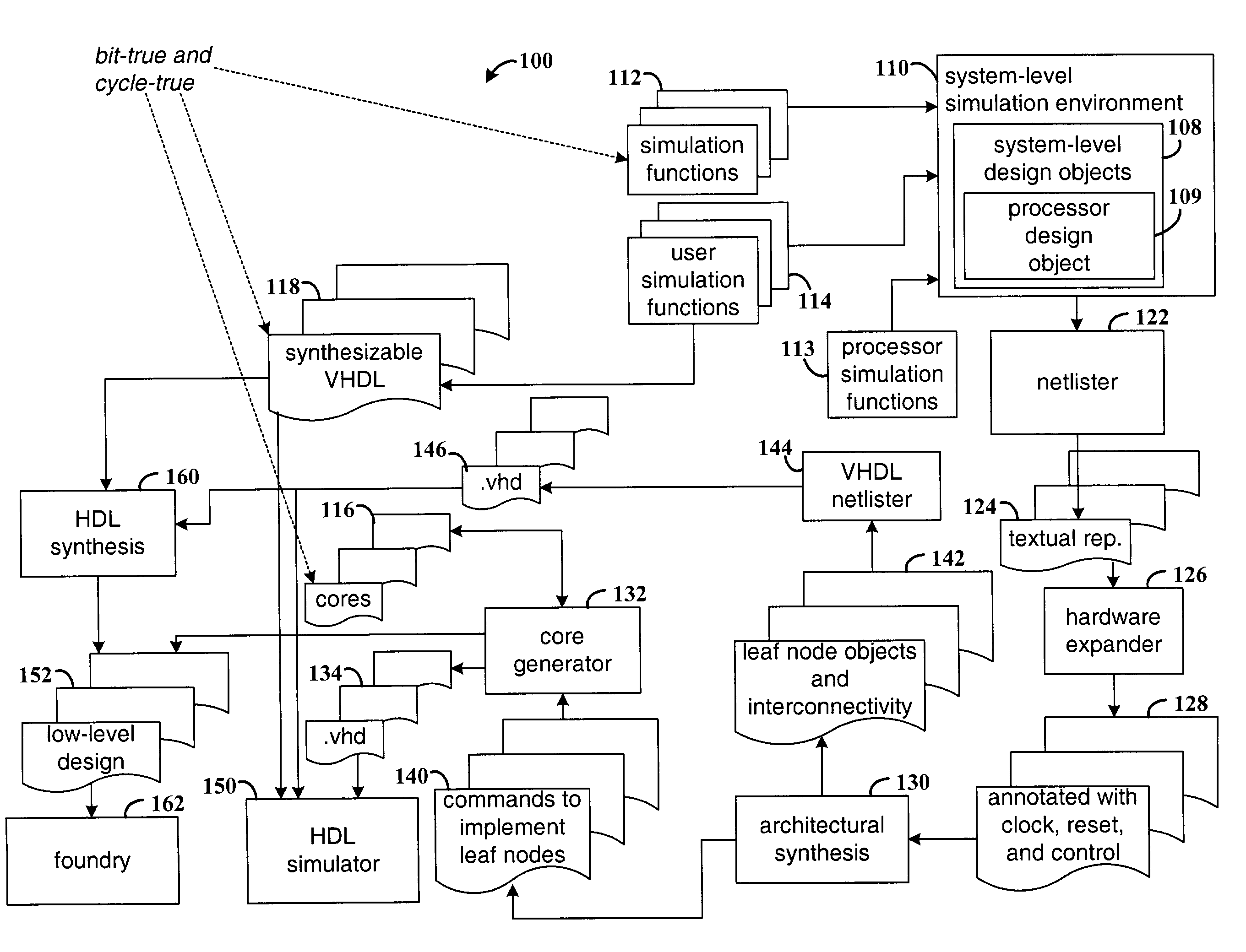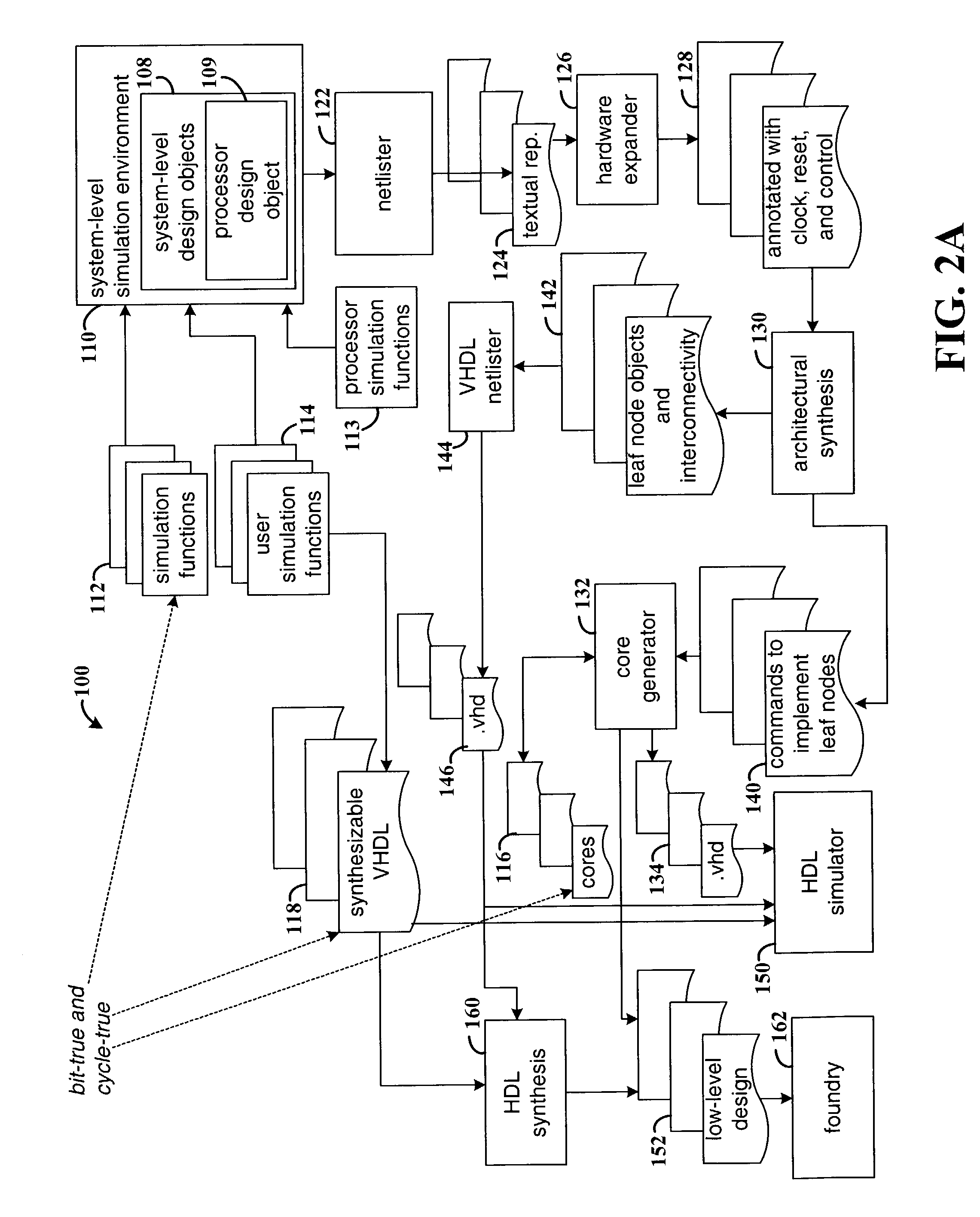Method and system for modeling and automatically generating an embedded system from a system-level environment
a technology of embedded systems and environment, applied in the field of electronic circuit design tools, can solve the problems of complex electronic systems that are implemented in application-specific integrated circuits, complex programmable logic devices (cplds), field-programmable integrated circuits (fpgas), etc., and expose design flaws or faulty assumptions upstream
- Summary
- Abstract
- Description
- Claims
- Application Information
AI Technical Summary
Benefits of technology
Problems solved by technology
Method used
Image
Examples
Embodiment Construction
[0020]The present invention is described in terms of system-level designs for embedded systems, including digital signal processing (DSP) applications and implementations for FPGAs. It will be appreciated, however, that the various concepts described herein, along with the various embodiments of the invention, can be applied to designs other than DSP systems and to implementation technologies other than FPGAs. The invention is applicable both to visual data flow modeling environments, and to other high-level design flows, e.g., based on a programming language such as C++.
[0021]The present invention addresses the validation problem by providing a mechanism for automatically generating a hardware realization from an embedded system model, thereby removing the necessity of verifying the equivalence of the two representations. In addition, a mechanism and methodology are provided for the automatic production of a verified hardware representation from a high-level system model. In variou...
PUM
 Login to View More
Login to View More Abstract
Description
Claims
Application Information
 Login to View More
Login to View More - R&D
- Intellectual Property
- Life Sciences
- Materials
- Tech Scout
- Unparalleled Data Quality
- Higher Quality Content
- 60% Fewer Hallucinations
Browse by: Latest US Patents, China's latest patents, Technical Efficacy Thesaurus, Application Domain, Technology Topic, Popular Technical Reports.
© 2025 PatSnap. All rights reserved.Legal|Privacy policy|Modern Slavery Act Transparency Statement|Sitemap|About US| Contact US: help@patsnap.com



